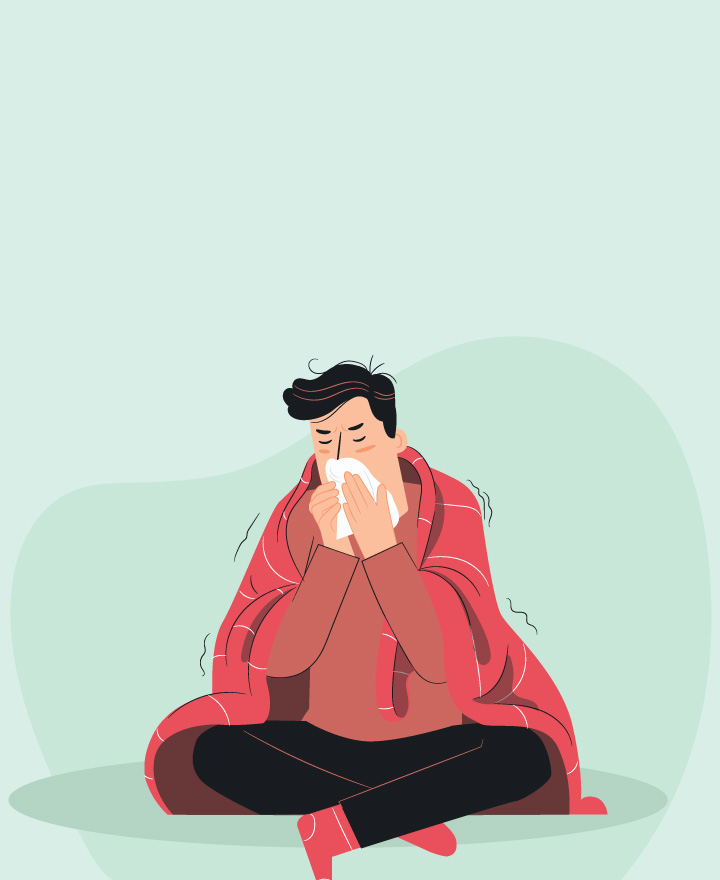

How Is Monkeypox Transmitted?
Monkeypox is a viral disease similar to smallpox but milder. The disease remains endemic in western and central Africa but has increasingly become a cause of concern as recent outbreaks have suggested a potential for global impact. But, how is this disease transmitted from person to person? Read on to know more.
How Does Monkeypox Spread?
Monkeypox can be transmitted in the following ways —
1. Animal to Human:
◦ Direct Contact: The virus can be transmitted from infected animals (such as rodents or primates) through bites, scratches, or handling of animal carcasses.
◦ Consumption of Infected Meat: Eating undercooked meat from infected animals may also pose a risk.
2. Human to Human:
◦ Respiratory Droplets: Prolonged face-to-face contact can lead to transmission through respiratory droplets, especially during close interactions.
◦ Direct Contact: Touching bodily fluids or lesions of an infected person can result in transmission.
◦ Contaminated Objects: The virus can survive on surfaces and objects (like bedding or clothing) used by infected individuals, leading to indirect transmission.
3. Sexual Transmission:
While not classified as a sexually transmitted infection, monkeypox can be spread through intimate contact, including sexual activity, particularly if lesions are present.
4. Transmission During Pregnancy:
In some cases, the virus can be passed from mother to child during pregnancy, through the placenta, or during childbirth. This is a rarer mode of how monkeypox is transmitted, but it’s an important one, as it highlights the risks for newborns whose immune systems are not fully developed. Awareness among pregnant women about these transmission risks is crucial in preventing neonatal infections.
Conclusion
Understanding how is monkeypox transmitted is critical to controlling its spread. Whether through animal contact, human-to-human transmission, respiratory droplets, or contaminated surfaces, knowing the pathways of infection can help reduce the risks. By staying informed and practising good hygiene, we can better protect ourselves and our communities from this emerging disease. Prevention, awareness, and careful management of close contacts are key to curbing how monkeypox spreads from person to person.
One of the important components of our overall wellness is also being financially secured. Healthcare emergencies can happen any time, but a good health insurance policy can protect you from such uncertain situations. To know more about Wellness and other health related tips, visit the wellness corner.
Source: cdc.gov, who.int
Disclaimer: This blog provides general information and discussions about health and related subjects. The information and other content provided in this blog, website or in any linked materials are not intended and should not be considered, or used as a substitute for, medical advice, diagnosis or treatment. Kindly contact your Doctor before starting a new medicine or health regime.
Related Articles
Everything You Need to Know About Monkeypox
Chickenpox vs Monkeypox - Causes, Symptoms & Treatment
Smallpox- Causes, Symptoms, Treatment & Prevention
How To Identify And Treat Chicken Pox Stages
Chicken Pox Symptoms - Recognizing the Signs
Published on October 17, 2024














 Car Insurance
Car Insurance  Bike/Two Wheeler Insurance
Bike/Two Wheeler Insurance  Health Insurance
Health Insurance  Pet Insurance
Pet Insurance
 Travel Insurance
Travel Insurance  Home Insurance
Home Insurance  Cyber Insurance
Cyber Insurance  Third Party Vehicle Ins.
Third Party Vehicle Ins.  Tractor Insurance
Tractor Insurance  Goods Carrying Vehicle Ins.
Goods Carrying Vehicle Ins.  Passenger Carrying Vehicle Ins.
Passenger Carrying Vehicle Ins.  Compulsory Personal Accident Insurance
Compulsory Personal Accident Insurance  Travel Insurance
Travel Insurance  Rural
Rural  Critical illness Insurance
Critical illness Insurance